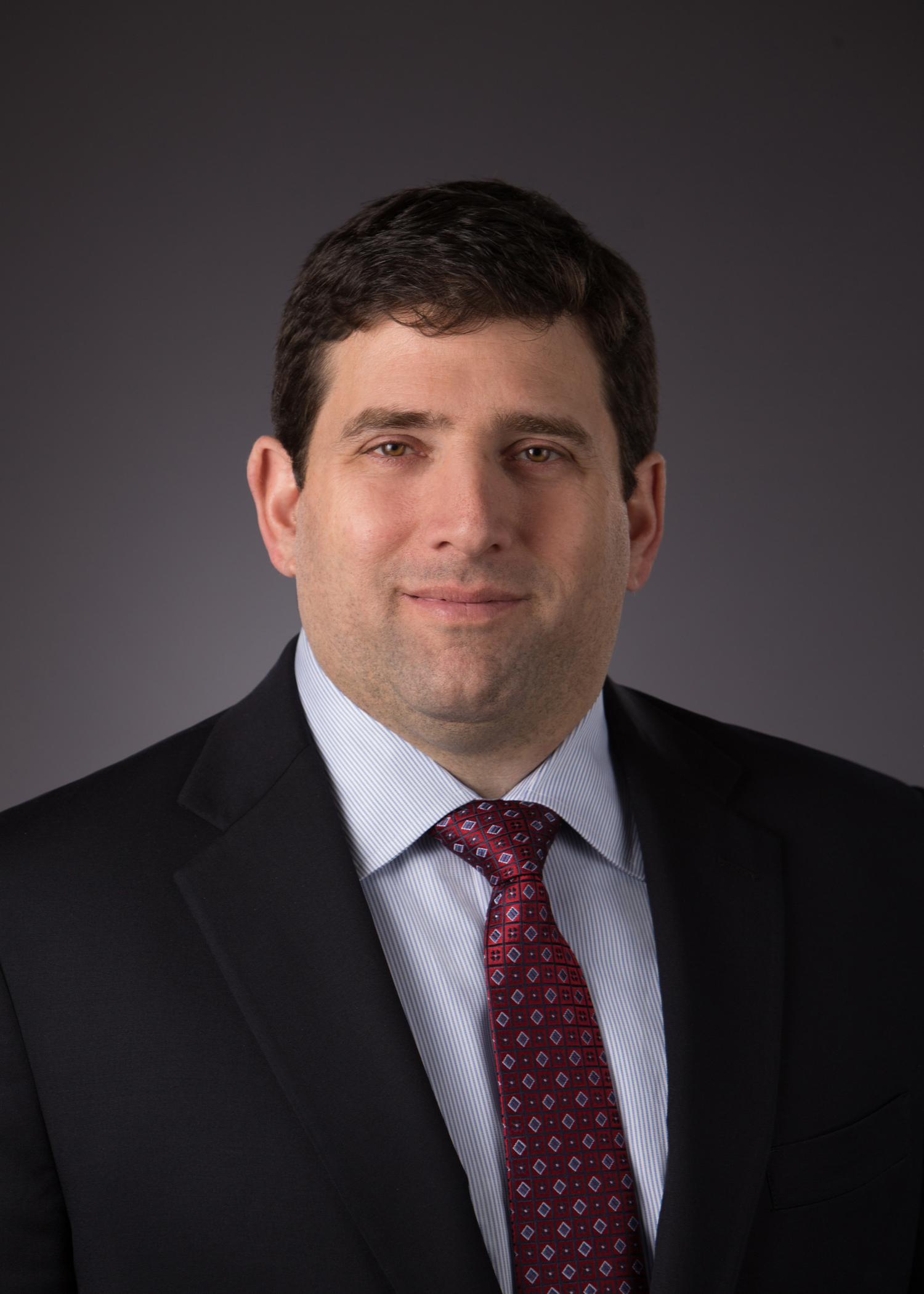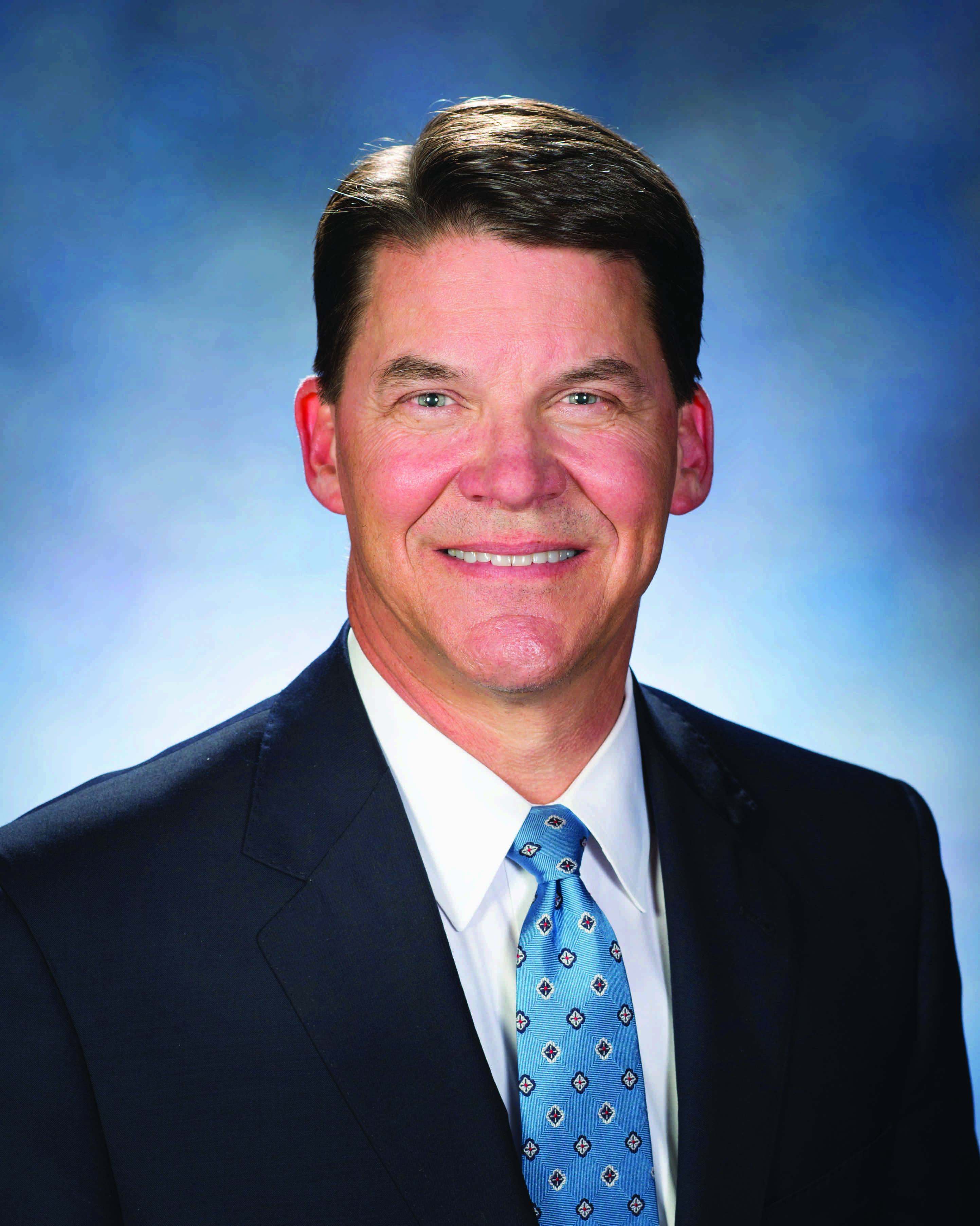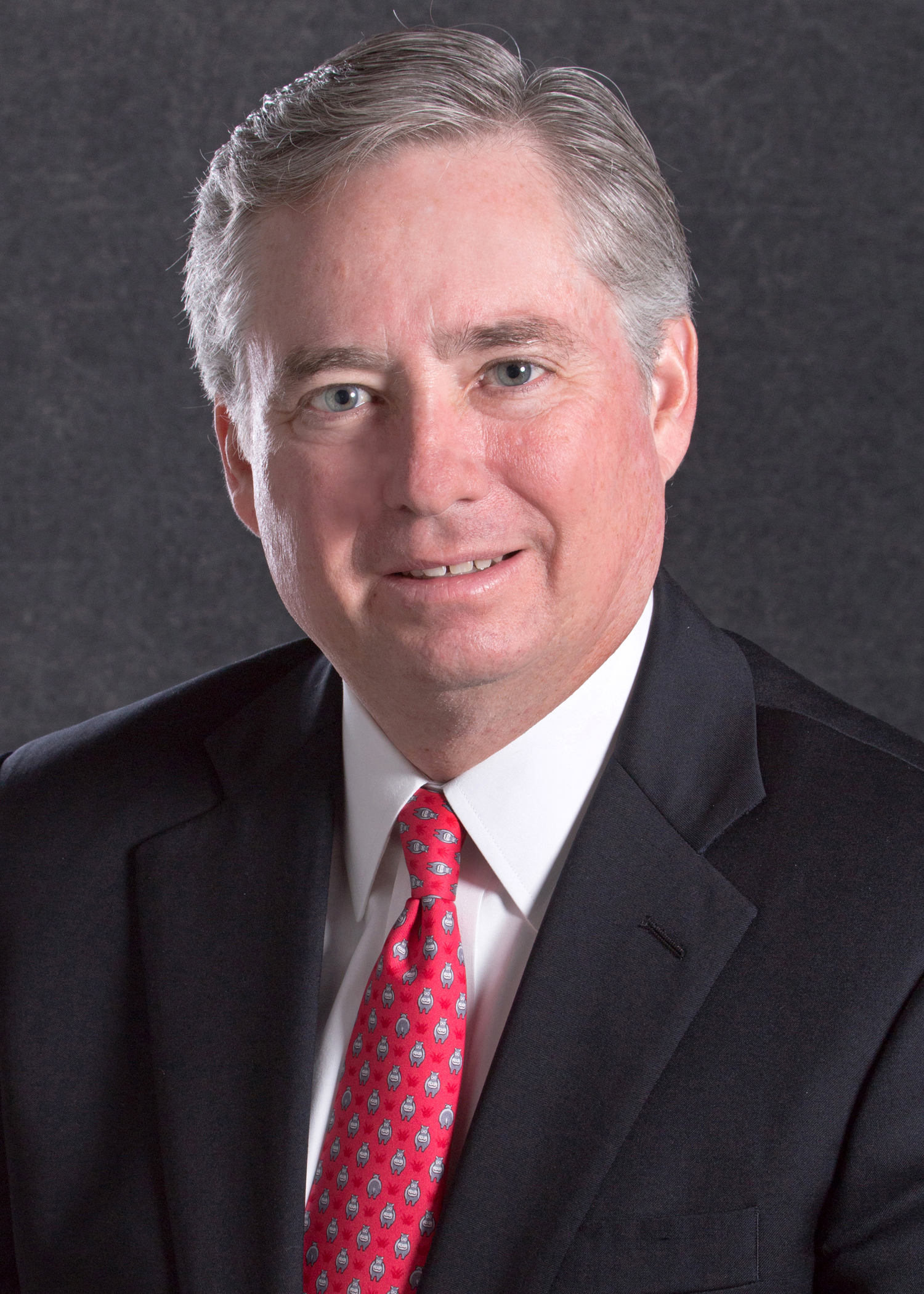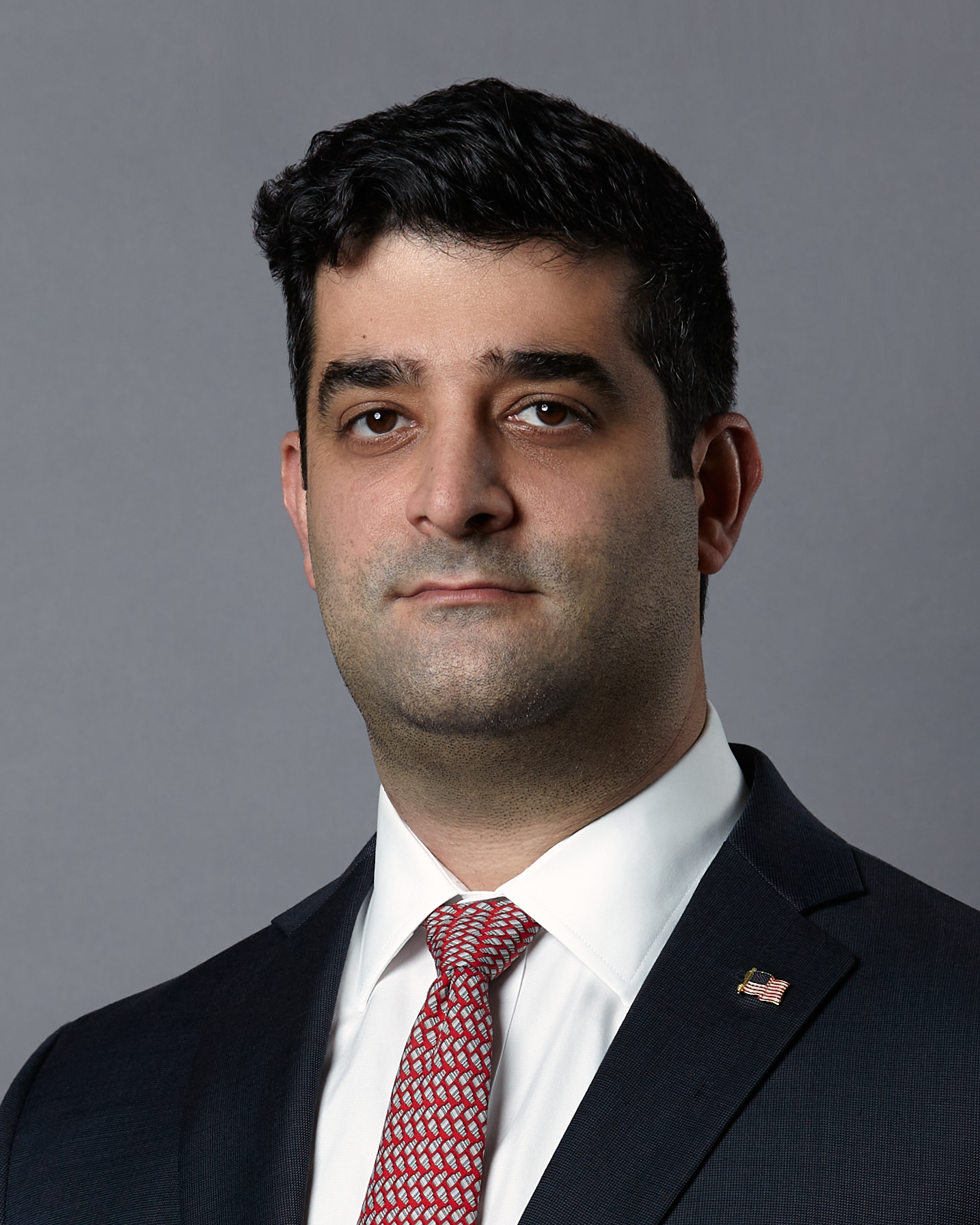
(Source: Shutterstock.com)
Presented by:

[Editor's note: A version of this story appears in the January 2021 issue of Oil and Gas Investor magazine. Subscribe to the magazine here.]
A pre-Cyber Monday email arrived from Blank Bank, announcing a 20% sale on Blank gift cards. First thought: Money’s on sale? Nah, no way.
Second thought: The sky is falling.
Third thought: This would certainly solve a lot of E&P companies’ debt problems, trading $80 for $100.
Fourth thought: The sky is falling.
Of course, yes, the Subject line had been misread, likely due to the “Because 2020” Syndrome: Anything had become plausible by Nov. 29. Money was not on sale for 20% off.
This was comforting; the sky was not falling.
A pre-existing condition
Still, how to solve the E&P debt problem? One producer approached CSG Investments Inc., an affiliate of Beal Bank. Would it refinance its existing bank debt?
Hans Hubbard and other CSG managing directors took a look. What CSG could offer was essentially the same debt amount—with more lender-favorable terms. The producer elected to keep its existing lending relationships.

“We’ve seen some situations where maybe they don’t have to refi,” Hubbard told Oil and Gas Investor. “They’re just seeing if they can.”
Compared with prior years, the state of E&P borrowing and bank lending is at a standstill, according to lenders. There are few prospective new clients. And asks for cash to pay for asset acquisitions are nonexistent. Many existing reserve-based loans (RBLs) are being guided lower.
But the new approach to RBL covenants “was going on before the drop in the oil price,” said Steve Kennedy, Amegy Bankhead of energy banking.
Producers’ net well results “were not as advertised,” bankers were finding, Kennedy said. “We were headed in this directional ready, even if the price of oil had stayed at $60. All this did was just exacerbate that problem, which already existed.”
Lenders had been increasingly resisting E&P borrowers’ estimates of new-well results, Kennedy said. The merit of banks’ independent engineers’ position began to manifest.
Shale is far from just a manufacturing process, despite claims just a year ago, he said. “It couldn’t be further from the truth.” The rock really makes a difference.
“Operators that are next door to each other can and have had very different results.”
The borrowers’ argument had been “their completion techniques had improved so, therefore, the reserves they were finding were greater.” Instead, in “nearly all the cases, they aren’t getting near the results that they thought they would,” Kennedy said.
Basins are “very heterogeneous. There are streaks in the shale. It’s not a homogeneous mass of shale.”
Also, completion techniques vary, he noted. “The EUR is substantially less in some cases than what was expected. And that’s why investors have lost confidence in the energy sector—because it has not delivered the kind of results that were projected.”
Year One
Kennedy was among speakers at Hart Energy’s annual Energy Capital Conference in March, held face-to-face before F2F events ended until further notice. It was March 2—four days before spring break in Houston that didn’t end until September, the 2.5-million-attendee Rodeo Houston was shut down and WTI began a fastidious freefall from $45 to negative $37.63 in seven weeks.
At the conference, Mike Lister shared a panel with Kennedy. Lister, who is JPMorgan Chase & Co.’s group head, energy and power corporate-client banking, pointed out that “RBL banks lost more money in 2019 than any other year in the history of RBL lending.”

“We’ve talked several times since then,” Kennedy said. He and other bankers “agree that these deals are going to have to amortize more from the beginning and not simply be put on a revolver structure that has no principal amortization.
“If we fail to get amortization in Year One, when the cashflow is the strongest,” he told Investor, “then we may never be able to catch up.”
Debt levels “need to come down into that 2.0 times [EBITDA] range before the amortization would stop and before we start allowing investors to take their money out.”
Lister said in the conference that RBL charge-offs were between $750 million and $1 billion in 2019, Investor reported. “Let that wash over you for a minute,” Lister said. “Not 2016, not 2015—that was a relative movement.”
Although the price of WTI improved beginning in 2016 and into early 2020, E&P Chapter 11 bankruptcy filings didn’t stop, according to Haynes and Boone LLP’s “Oil Patch Bankruptcy Monitor” it launched in 2015.
There had been about 50 by the first quarter of 2016; by year-end 2019, there had been roughly 150 more. 2020 filings through Oct. 31 totaled 43, according to the Haynes and Boone count.
E&P secured debt entering Chapter 11 in 2020 through Oct. 31 was about $30 billion; cumulative E&P secured debt in court since 2014 totaled about $80 billion. Secured and unsecured totaled about $180 billion by Oct. 31.
‘Holding the bag’
Keith Buchanan concurs with Kennedy: It was already underway.
“It was probably about this time [in late 2019] that we started to see some tightening to the financial covenants,” said Buchanan, managing director and head of oil and gas investment banking, KeyBanc Capital Markets. “Primarily the leverage ratio.”
The standard had been 4.0 times debt to EBITDA. “Even in late [2019], that started to tighten to 3.5 or less.”
Also, the restricted-payment covenant—borrowers’ “ability to make any distributions or really have money go out of the system”—has tightened, Buchanan said.
“Typically, that was set at 1.0 turn less than the leverage covenant.” If the covenant was 4.0, the restricted payment trigger was 3.0.
“Now, it’s 2.0 or 2.5 and you have to have a certain amount of availability to make a restricted payment,” Buchanan said.
“And that availability used to be 10% to 15%. It’s now more like 20% to 30%.”
At Amegy, Kennedy is seeing “absolutely a covenant of no more than 3.5 debt to EBITDA. And we’re seeing a lower covenant in some new loans.” Some are 3.0. And for new deals, Kennedy said, “Out of the box, the actual debt levels on Day One are generally below 2.5 times EBITDA.”
It’s largely a reflection of property value. If market value is 4.0 times EBITDA, “and we’re at 2.0 times EBITDA, then we have 50% equity, 50% debt. Back when properties sold for 8.0 times EBITDA, we could have a covenant at 4.0 times and still have a property equity cushion.
“It’s the same 2-to-1 relationship.”
Tough love? It’s nothing personal, Kennedy said. “We lost a decent amount of money with the higher parameters.
“We can’t let people leverage companies up by taking cash out and then leave us holding the bag as market prices/values drop. So once again, everything’s getting adjusted down.”
‘New owners’
At First Horizon Bank, Bryan Chapman, market president, energy lending, is thinking that, in current market conditions with so much excess capacity, “The industry does not need to grow.
“A company that uses all of their internally generated cash flow to plow back into the drill bit is a scenario that can result in growth.” But, in a world flush with oil, “Growth is not needed.”

adding a new, big bank group for a new, big deal.”
In the past six years, “If you look at how much capital has been destroyed, with all of that high-yield debt getting equitized, you have new owners,” Chapman said.
Prior to technological advancements in Lower 48 shale development, growing was “pretty difficult to do. You were really in a resource-constrained world.”
E&P executive compensation was tied to growth. But growth is less difficult today than, say, 20 years ago. “With executive management incented to grow and having access to abundant capital, the U.S. oil and gas industry was able to pivot from decades of structural decline to rapid growth,” he said.
“And, when everybody grows, inventories can get out of balance quickly, especially when a black swan event” like 2020 happens.
The post-restructuring owners—former bondholders—are “interested in getting a return of their capital,” he said.
They “would rather see the company underspend cash flow to maintain production levels, avoid getting overleveraged and return some of that internally generated cash flow [to them and other owners] via dividends.”
Basin, intrabasin, commodity
KeyBanc’s Buchanan is seeing basin-based variability in lending. “I’m pretty confident we’re going to see lower advance rates applied to certain basins. The Permian might get a better advance rate than the Midcontinent or the Gulf Coast.”
There is differentiation in valuing proved undeveloped reserves (PUD), he added. “It used to be the PUD basket would be filled up, but you might not fill up the PUD basket in all cases[today].”
Kennedy noted that it isn’t very different than how nonshale had become valued in comparison with shale. A peer at another bank noted in a conversation with Kennedy, “Hey, we never loaned the same amount of money to a company that was in the shallow waters of the Gulf of Mexico versus one operating exclusively onshore.”
Kennedy said, “We always treated them differently and would lend a little less there because we knew there was a higher risk.
“We need to do the same thing with these shale companies. They’re not all the same.”
In shale, he said, “If they’re not in the core, there could be a significantly higher risk. They could be in the Midland Basin, but if they’re not in the core of the Midland, there’s a substantially higher risk for that development.”
Another risk is spending hundreds of millions on, say, a 24-well pad “before they even know what their results are on the first pad,” Kennedy said.
As for natgas-weighted producers, Buchanan said their covenants had already been adjusted prior to 2020. “[Before 2020,] we had relatively high oil prices and relatively low gas prices, so there was probably more consternation amongst lenders for their gas clients.”
The disposition toward natgas producers has actually improved, he said. “[It] did a 180in the second quarter, and gas became the relative strength within portfolios.”
Still, the tightened covenants “are essentially being applied across all companies,” he added.
Less competition
Lender tightening after WTI-price shocks in 2008 and 2014 didn’t last long. After 2014, for example, there was the cash sweep.
But the structure was complicated by the lumpiness of E&P revenue in contrast to the constancy of payroll, according to Buddy Clark, author of “Oil Capital” (2016) and an energy finance attorney with Haynes and Boone.
Will the 2020 edition of covenants stick? Become permanent?
Lending for a couple of decades now, Buchanan said he’s “seen the cycles where we swing too far one direction and we swing back and correct.”
What might be different now “is you have so many banks leaving the business,” he said. “When you’ve got a lot of competition, banks compete to win business by terms and pricing.
“You have a lot fewer banks competing forth is business than there were 12 months ago.”
The Haynes and Boone price-deck survey in October showed 20 banks invited and 16 participating. The spring survey published April 1 had 32 banks invited and 21 participating.
A syndicate today may consist of about a third fewer banks, Kennedy said. “If we had 35 banks that used to have a price deck, it would be hard to put maybe a dozen together right now that would come into a loan syndicate.
“Putting together a new syndicate right now is almost impossible.”
Amegy has had to step up above its pre-2020 pro rata share in some RBLs, he added—“RBLs that we were already in just to help the [E&P borrowers] cover their borrowing base.”
He expects peers’ participation will improve this year. But many banks are just working on existing deals—as well as existing problems—“and not really out in the market, trying to do new deals.”
By mid-November, Amegy Bank itself had done only one new deal since March. “And we were happy to do it, but it was a deal we were already looking at back in March. We just had to put it on hold for a while.”

and gas investment banking with KeyBanc Capital Markets.
The collateral and covenants reflect the new standards. “It was a perfect deal,” Kennedy said. “All natgas, all in the core of the Marcellus.”
He expected Amegy would sign more new deals before 2020-end. Actually, a lot of them “look much better than almost anything we currently have in our portfolio,” he said in November.
After the 1980s price collapse, many banks didn’t enter or reenter until the late 1990s. Might it take that long again?
Buchanan said, “I do believe so.” Some may be gone permanently due to internal ESG-related mandates, especially European banks, he said.
Meanwhile, some syndicate participation is reduced due to lender consolidation—IberiaBank Corp. with First Horizon National Corp., closed in July; SunTrust Banks Inc. with BB&T Corp., closed in December 2019; PNC Financial Services Group Inc. with BBVA USA Bancshares Inc., announced in November. First Horizon’s Chapman said that, “as for trying to put together a syndicate for a large deal, I think that universe is shrinking” due to lender exits from the space and lender mergers.
Meanwhile, though, demand for new RBLs is down, he added. “There’s just not as much activity. You’re not seeing the historic level of oil and gas property A&D activity with big equity sponsors, writing big checks and adding a new, big bank group for a new, big deal.”
Asset activity in 2020 was with equity. “There isn’t a big growth opportunity with new private equity-backed companies in the current environment due to constrained access to capital, which is limiting the opportunity for companies to sell properties at attractive prices.
“It’s not a frothy deal environment.”
2021
RBLs used to have five-year maturities, Buchanan said; “Today, they are three-year maturities.” Some borrowers will be at bat this year.
“To the extent they haven’t already changed pricing, changed covenants, changed all these other things, they’re going to be faced with that to extend maturity,” Buchanan said.
Kennedy said new deals have to “check all of the boxes. If it misses one box, we’re not going to do it.”
It’s not that lenders are being too tight, he added. It’s just that, “Honestly, every one of us knows that, if we go out and start doing deals that have a problem anytime soon, we can just go look for something else to do.
“There’s absolutely no way we can put anything on the books right now that even comes close to being a problem in the next six to 12 months. We, as an industry, were allowing, in some cases, a little too much leverage.”
He and other lenders are trying to “let everybody know what’s happening—because we love the industry, and we don’t want to pull the rug out from under anyone.”
Lenders aren’t demanding borrowers “get into that [new-covenant] range, that box, right now as an existing deal. But we are trying to guide them lower as we work through all of this with them,” Kennedy said.
“We’re not trying to create problems. We’ve got plenty of real problems without artificially creating any.”
SIDEBAR:
First-Lien Term Loan
E&P lending at CSG Investments Inc., an affiliate of Beal Bank, is focused on secured, first-lien term loans. During 2020, “We’ve seen a shift in preference to debt products more aligned with our focus,” said Hans Hubbard, a CSG managing director.

In September, CSG closed a $200 million senior term loan to Kosmos Energy Ltd. with a five-year maturity, secured by Kosmos’ Gulf of Mexico assets.
Underwriting standards were unchanged in 2020, Hubbard said. “We remain focused on what we consider our key lending principles, which is a focus on loan to value in the 50% to 65% range, controls on G&A so it stays within reason relative to assets and controls on capital expenditures so we feel like truly economic wells are being drilled.”
Each loan contains amortization and an excess-cashflow-sweep concept.
“Our lending approach has not changed in this cycle,” as CSG and Beal Bank stick to consistency throughout the business cycle, Hubbard said. CSG expects continued challenges in the E&P space this year. While its standards won’t change, Hubbard expects “further acceptance by borrowers,” such as the emphasis on a demonstrated ability to be repaid out of cash flows “versus assuming a refinancing by another lender or by some kind of accretive asset sale.”
Refinancing and/or raising cash via asset sales mostly wasn’t possible in 2020 and likely won’t be this year, so borrowers and lenders “truly need to be able to see a payback out of cash flow,” he said.
Farzin Dinyarian, also a CSG managing director, said that, in the Kosmos case, the Gulf of Mexico assets were unencumbered, “so no existing secured debt. That enabled CSG to come in and provide secured financing.
“But the balance of the industry has already encumbered their assets with secured debt, so there’s not much for us or other lenders to do at this point in the cycle.”
There are queries from potential borrowers, Hubbard said, but most cases “have not been able to bridge the gap on the proposed amount of debt and other terms and conditions.”
Recommended Reading
Pemex’s Dos Bocas Refinery to Reduce Mexico’s Reliance on US Fuel
2024-06-20 - Mexico will significantly reduce its dependence on fuel from the U.S. in 2025 once state-owned Pemex concludes construction of its 340,000 bbl/d Olmeca refinery in Dos Bocas, according to the International Energy Agency.
Texas Startup Hopes Fourth Time's a Charm to Build First Big US Oil Refinery Since 1977
2024-06-07 - Element Fuels Holdings, a Dallas-area startup proposing to build the first all-new U.S. oil refinery in nearly 50 years, on June 6 said it was relaunching efforts to build a large plant in South Texas.
Port of Corpus Christi Closes as Tropical Storm Beryl Approaches
2024-07-07 - Port closures could temporarily halt crude oil exports, shipments of crude oil to refineries and motor fuels from those plants.
Oil, Gas Industry Braces for Storm After Beryl Shifts Toward Houston
2024-07-07 - Chevron and Shell have evacuated offshore platforms as Tropical Storm Beryl could grow into a Category 2 hurricane when it makes landfall in the Houston area on July 8.
Oil Prices Up Slightly as US Crude Oil Inventories Fall
2024-07-03 - The U.S. Energy Information Administration reported a 12.2 million draw in the country's crude oil barrels in storage last week.


